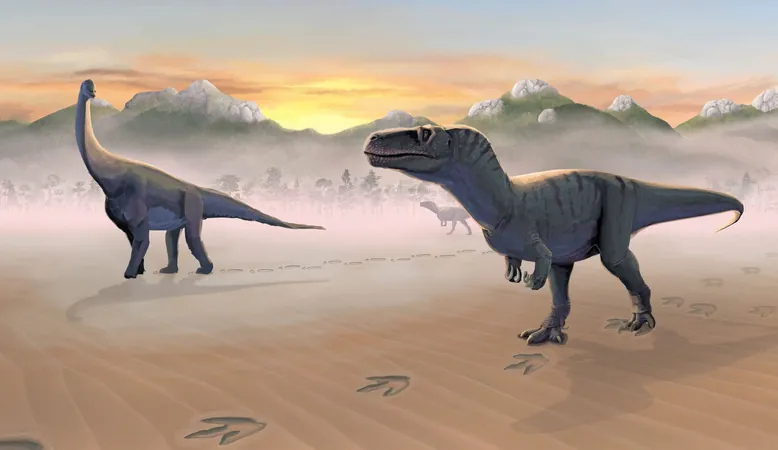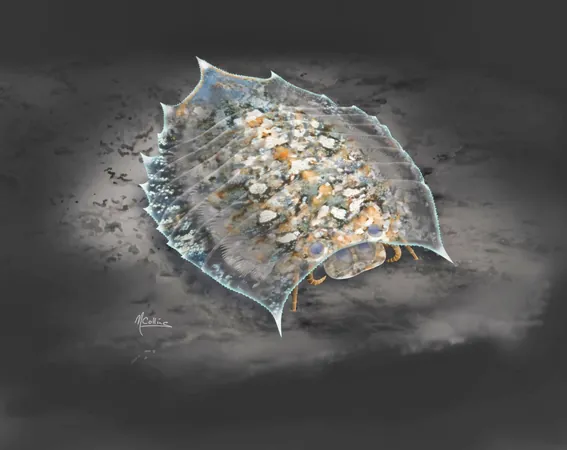
Astonishing Dinosaur Footprints Discovered on Scotland’s Isle of Skye: A Window into the Jurassic Era!
2025-04-05
Author: Nur
Astonishing Dinosaur Footprints Discovered on Scotland’s Isle of Skye: A Window into the Jurassic Era!
The stunning Isle of Skye, famed for its rugged landscapes and rich history, has unveiled a captivating chapter from its prehistoric past. A team of researchers has unearthed a remarkable 131 fossilized dinosaur footprints along the island's rocky coastline, offering an extraordinary glimpse into life on Earth approximately 167 million years ago during the Middle Jurassic period.
The nickname “Dinosaur Isle” was earned by Skye after the groundbreaking discovery of a ceratosaur tibia in 1992 near Heaste. Since that pivotal find, the island has transformed into a vital hub for paleontological research, drawing scientists and dinosaur enthusiasts from around the globe.
Emboldened by this history, new discoveries have emerged, including fossil remains of a flying reptile—an extraordinary relative of the dinosaurs—found on Skye's beaches in February 2024. This find has ignited excitement among locals and tourists, all eager to uncover more secrets hidden within Skye’s breathtaking shores.
The recently found tracks were imprinted by both ferocious theropods and gentle sauropods at a historically significant site once used as a refuge by Bonnie Prince Charlie in 1746. According to reports from experts, the theropod tracks, stretching approximately 18 inches long, feature three well-defined toes with sharp claws. In contrast, the sauropod prints are more rounded, about 20 inches in diameter, often revealing impressions of stout toes.
Advancements in drone technology allowed scientists to craft intricate digital models of these trackways, unveiling a sanctuary where these ancient creatures cohabited a subtropical lagoon ecosystem in apparent tranquility. "It’s a serene snapshot of dinosaurs congregating, possibly to hydrate or navigate between foliage," explained a paleontology graduate student from the University of Edinburgh. This discovery bolsters the theory that carnivorous and herbivorous species might have existed harmoniously, reminiscent of the cohabitation we see among modern species at water sources today.
The Isle of Skye now boasts more than 10% of the world's known Middle Jurassic dinosaur species, underscoring its significance in understanding this often-overlooked chapter of dinosaur evolution. This latest find not only enriches our knowledge of ancient ecosystems but also ignites curiosity about the rich tapestry of life that once thrived on our planet. As scientists continue to study these remarkable footprints, who knows what other tantalizing secrets the Isle of Skye may still hold? Keep your eyes peeled; the adventure in uncovering our prehistoric past is only just beginning!


 Brasil (PT)
Brasil (PT)
 Canada (EN)
Canada (EN)
 Chile (ES)
Chile (ES)
 Česko (CS)
Česko (CS)
 대한민국 (KO)
대한민국 (KO)
 España (ES)
España (ES)
 France (FR)
France (FR)
 Hong Kong (EN)
Hong Kong (EN)
 Italia (IT)
Italia (IT)
 日本 (JA)
日本 (JA)
 Magyarország (HU)
Magyarország (HU)
 Norge (NO)
Norge (NO)
 Polska (PL)
Polska (PL)
 Schweiz (DE)
Schweiz (DE)
 Singapore (EN)
Singapore (EN)
 Sverige (SV)
Sverige (SV)
 Suomi (FI)
Suomi (FI)
 Türkiye (TR)
Türkiye (TR)
 الإمارات العربية المتحدة (AR)
الإمارات العربية المتحدة (AR)